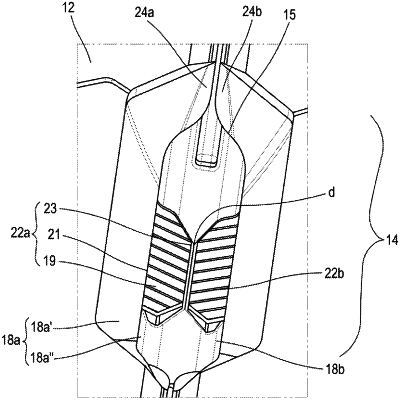| CPC B60C 11/1353 (2013.01) [B60C 2011/1361 (2013.01)] | 10 Claims |

|
1. A tread for a tire, comprising:
a tread surface intended to come into contact with a road surface during running, said tread comprising at least one cavity that opens onto the tread surface in a new state, called external cavity, said external cavity having a length L, a width W and a central plane P, said external cavity comprising a bottom and at least two opposite lateral walls extending from said bottom, said external cavity comprising means for ejecting stones during said running, wherein said means (20) for ejecting stones comprise:
two protuberances protruding from the bottom of the external cavity, the two protuberances being disposed so that their respective axially inner faces are at least partially opposite one another at a distance d;
a radially outer surface of each protuberance being inclined respectively from a lateral wall of the external cavity towards the central plane P; and
the distance d between the two opposite axially inner faces of the protuberances being less than or equal to 10% of the width W of the external cavity,
wherein each lateral wall of the external cavity has an inclined part extending as far as the tread surface and a straight part, each protuberance extending from the straight part of said respective lateral wall, the inclined parts extending towards each other forming a respective sipe.
|